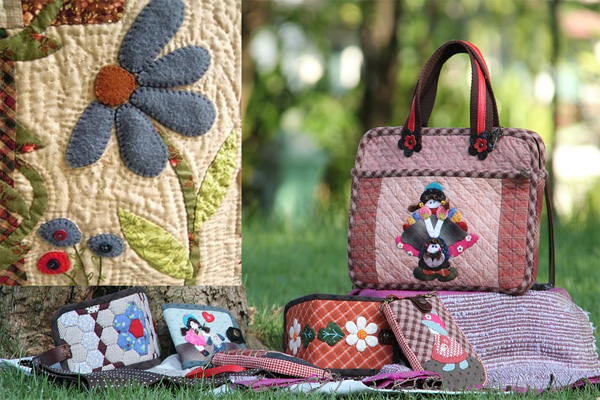Quilting
Quilting Craft
There are many things to induce women to piece quilts. The desire for a handsome bed furnishing, or the wish to make a gift of one to a dear friend, have inspired some women to make quilts. With others, quilt making is a recreation, a diversion, a means of occupying restless fingers. However, the real inducement is love of the work; because the desire to make a quilt exceeds all other desires. In such a case it is worked on persistently, laid aside reluctantly, and taken up each time with renewed interest and pleasure. It is this intense interest in the work which produces the most beautiful quilts. On quilts that are made because of the genuine interest in the work, the most painstaking efforts are put forth; the passing of time is not considered; and the belief of the majority of such quilt makers, though unconfessed, doubtless, is the equivalent of the old Arab proverb that "Slowness comes from God, but hurry from the devil."
In the past quilting craft was very popular. Quilts were frequently made to commemorate major life events, such as marriages, to welcome a new baby, graduations, or when individuals left their homes for other communities. Sometimes the quilts were made and auctioned off to raise money for variety of community projects or fundraising after disasters and war.
All women who are lonely do not live in isolated farmhouses, prairie shacks, or remote villages. In reality, there are more idle, listless hands in the hearts of crowded bustling cities than in the quiet country. City women, surrounded by many enticing distractions, are turning more and more to patchwork as a fascinating yet nerve-soothing occupation. Not only is there a sort of companionship between the maker and the quilt, but there is also the great benefit derived from having found a new interest in life, something worth while that can be built up by one’s own efforts.
An anecdote is told of a woman living in a quiet little New England village who complained of her loneliness there, where the quilting bees were the only saving features of an otherwise colourless existence. She told the interested listener that in this out-of-the-way hamlet she did not mind the monotony much because there were plenty of "quiltings," adding that she had helped that winter at more than twenty-five quilting bees; besides this, she had made a quilt for herself and also helped on some of those of her immediate neighbours.
Did You Know?
A key component that defines a quilt is the stitches holding the three layers together—the quilting. Stitching patterns can be a decorative element.
Hand quilting was often a communal activity, involving all the women and girls in a family or in a larger community. The tops were prepared in advance, and a quilting bee was arranged, during which the actual quilting was completed by multiple people (quilters) sitting around a large quilting frame.
One of the primary techniques involved in quilt making is patchwork, sewing together geometric pieces of fabric often to form a design or "block." Also called piecing, this technique can be achieved with hand stitching or with a sewing machine.
It was considered bad luck to incorporate heart motifs in a wedding quilt (the couples’ hearts might be broken if such a design were included), so tulip motifs were often used to symbolize love in wedding quilts.
Traditional Quilting and Beyond...

Great Craft Creations
Surprise your loved ones with great craft creations, decorate your house, or make unique gifts...Did You Know?
If you need some dry material instantly you can use your microwave oven for making what you need. To dry herbs or flowers in the microwave oven instantly you will need SILICA GEL. Silica gel is a substance used to dry delicate flowers too, such as roses or calendula, as it preserves their forms and colors well. Silica gel can usually be found in craft stores.
It is very simple to dry flowers with a silica crystals, just use microwave safe container with a 1" (2,5 cm) thick layer of the silica crystals and place your flowers on the top allowing about 1-inch of space around the sides and between each flowers. Put another 1-inch layer on the top of flowers and then microwave on cca 50 % power for approximately 2-3 minutes, depending on the type of your microwave and flowers. It is better to check the material progress an add some more times if needed. Flowers and leaves often have different drying times, microwave them separately for better result.
Never use silica gel containers for preparing food after you use them for drying flowers, because they often absorbs pesticides from plants as they dry.


